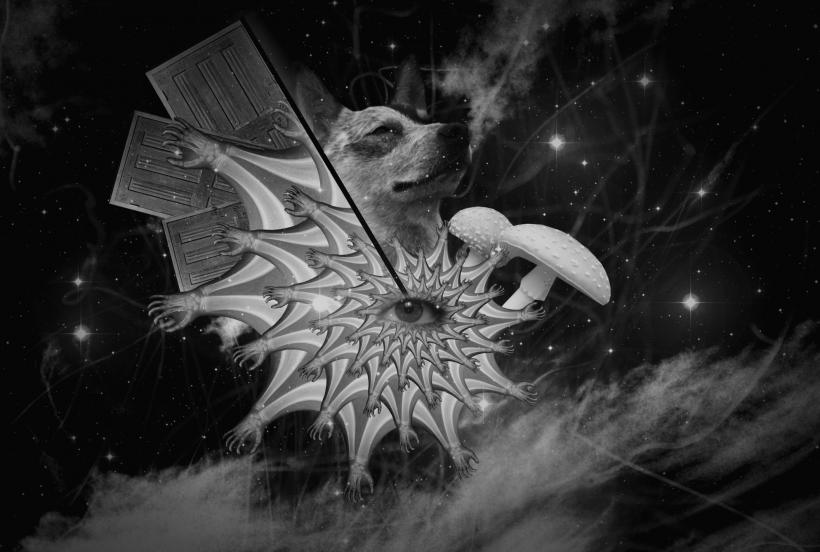
Thinkstock. You know what's not? A dog's head.
It's not every day that the science community announces it could be on the cusp of solving a mystery that's plagued the human mind for more than 80 years.
Although his observations and postulations on "dark matter" are considered now to be rather flawed due to inadequate evidence, Dutch astronomer Jan Oort is credited with first putting this elusive star-stuff on the map through his studies of celestial movement in the 1930s. Oort observed that the universe was indeed expanding—a theory championed by Edwin Hubble—but he also knew it should be moving at a much faster rate than he was observing. Gravity was already a well-known entity—it was the interstellar glue-force that held everything together—but Oort realized he was witnessing more gravitational pull than the observable matter should have.
The discrepancies between these expansion speeds had to be explained by something we couldn't see. Thus the dawn of "dark matter."
Cut to 1960, when veritable brain-badass Vera Rubin (alongside collaborator Kent Ford) began wondering why spiral galaxies varied in their brightness. (I mean, who among us hasn't lost sleep over that conundrum?) She assumed that they would discover—using a spectograph, which separates light into a frequency spectrum, of course—that the stars orbiting the center of the galaxy would move more slowly the farther away they were from the center. (As the visible mass of any given galaxy and its associated gravitational pull is always concentrated at the center.)
But that wasn't the case. Rubin and Ford observed that in actuality, the outer stars of the galaxy were orbiting just as quickly as those at the center, so once again the question was raised: What the hell was adding all the extra gravitational force to keep this galaxy together?!
Dark matter y'all.
OK. Moving on. Here's the lowdown in this day and age: While combing through data collected by the European Space Agency's XMM-Newton spacecraft (the world's most powerful X-ray satellite), researchers spotted an "odd spike in X-ray emissions" coming from two different celestial objects—the Andromeda galaxy and the Perseus galaxy cluster," reports Space.com.
Currently there are quite a few theories floating around the stratosphere as to what exactly constitutes dark matter; researchers propose it could be "weakly interacting massive particles (WIMPs), axions and sterile neutrinos, hypothetical cousins of 'ordinary' neutrinos (confirmed particles that resemble electrons but lack an electrical charge)," explains science writer Mike Wall. (You can click all those lovely blue links in Wall's description of these particles—I added them myself—but it's a hot-bed of heady shit.)
What you truly need to know is that when these sterile neutrinos decay, it's believed they produce X-rays. If this is the case, their presence could be the reason that the Newton spacecraft is picking up strange X-ray spike signals from Andromeda and the Perseus cluster.
"Confirmation of this discovery may lead to construction of new telescopes specially designed for studying the signals from dark matter particles. We will know where to look in order to trace dark structures in space and will be able to reconstruct how the universe has formed." — Alexey Boyarsky, lead author, An unidentified line in X-ray spectra of the Andromeda galaxy and Perseus galaxy cluster
The paper is poised to be published next week in Physical Review Letters and could very well mark an unprecedented leap in understanding exactly what comprises our universe as other researchers clamor to confirm their conclusions.
